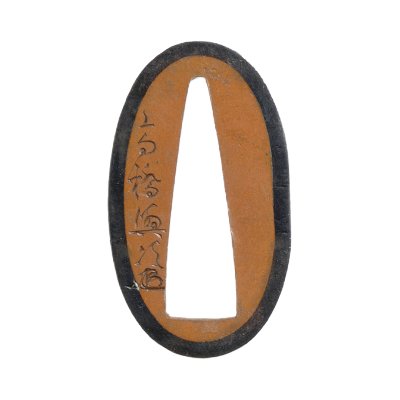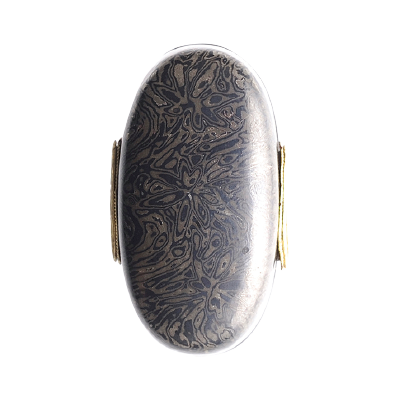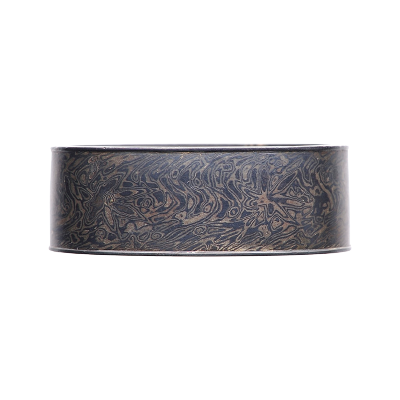Tsuba and fuchi-kashira with design of maple leaf floating in the Tatsuta River.Tsuba and fuchi signed: “Takahashi Okitsugu,”with kao.
Mid-to-late Edo period
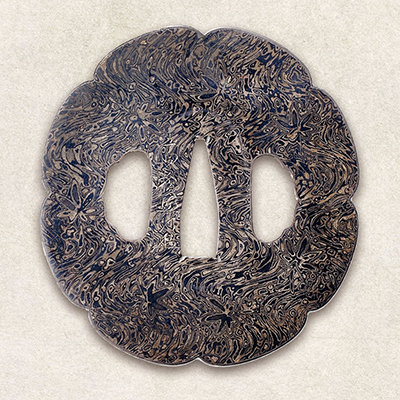
【 Dimensions(mm)】- Tsuba:H 72.5 x W 68.0 x T 5.0 / 151.7g
- Fuchi:H 38.6 x W 22.3 x T 13.4 / 29.0g
- Kashira:H 34.3 x W 18.9 x T 9.8 / 17.6g
- 【 Date of production 】
- Mid-to-late Edo period
- By covering the entire surface of the tsuba, Takahashi Okitsugu provided a prototype to match his expansive vision for mokume gane. In his “fusion of expression and technique”, he brought mokume gane into new territory. Therefore, these two works can be seen as the culmination of the art of mokume gane as we know it today.
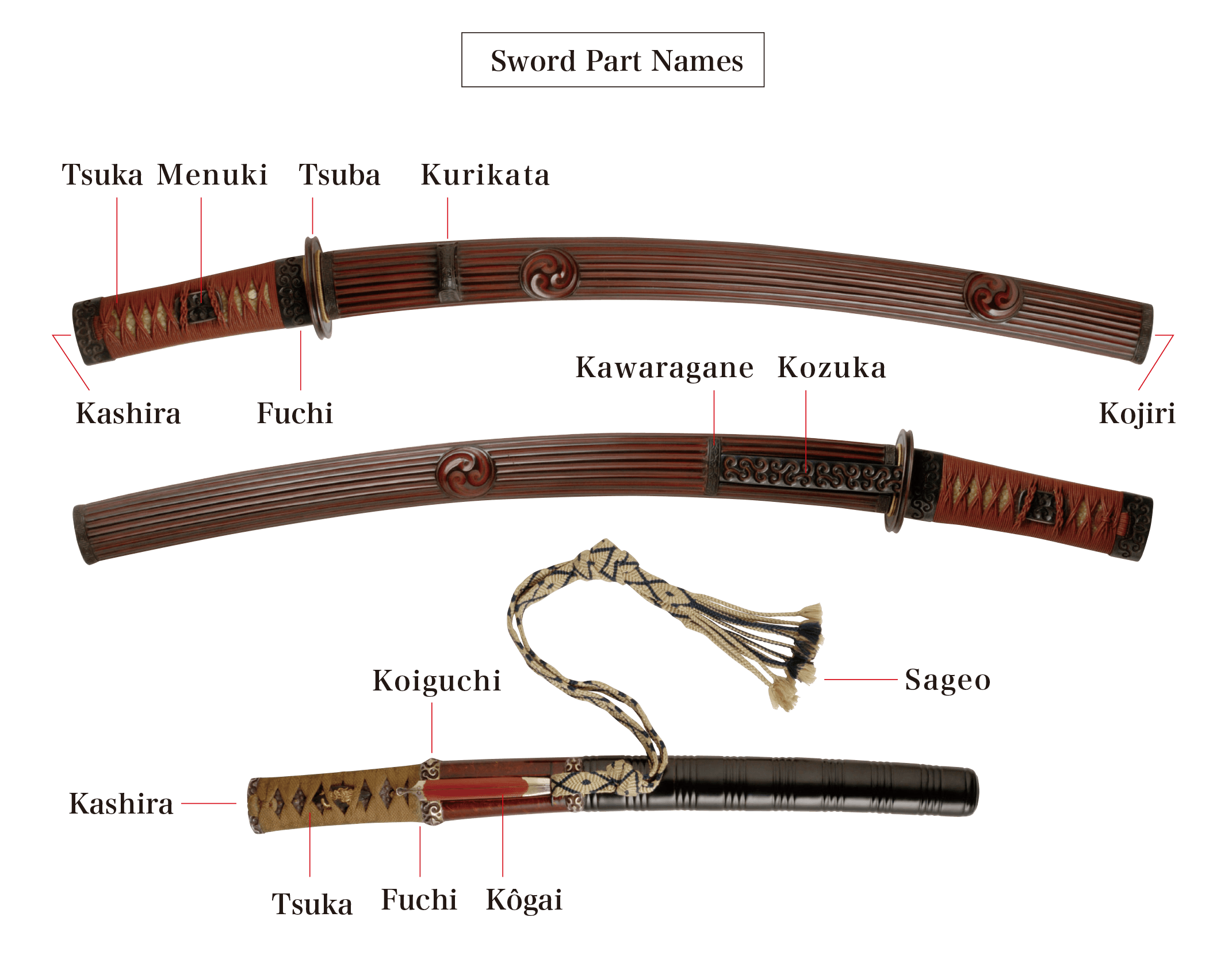
- Tsuka:Sword handle
- Fuchi:Metal collar on sword handle
- Kashira:Metal pommel (or butt cap) at tip of handle
- Menuki:Ornamental rivets on the tsuka. They also prevent the hand from slipping.
- Tsuba:Sword guard fitted between the handle and the blade, to protect the hand holding the handle
- Kurikata:Fitting near the sayaguchi (opening of scabbard) for attaching the sageo
- Kojiri:Ornamental fitting at the tip of the saya (scabbard)
- Kôgai:A utensil shaped like a chopstick that fitted into the scabbard and was used to tie back hair
- Kozuka:The handle of a small knife that fitted into the scabbard, or the small sword itself
- Kawaragane:Fittings attached to the part where the kozuka was stored
- Koiguchi:The opening, or mouth, of the scabbard
- Sageo:The cord used to attach the sword to the obi
